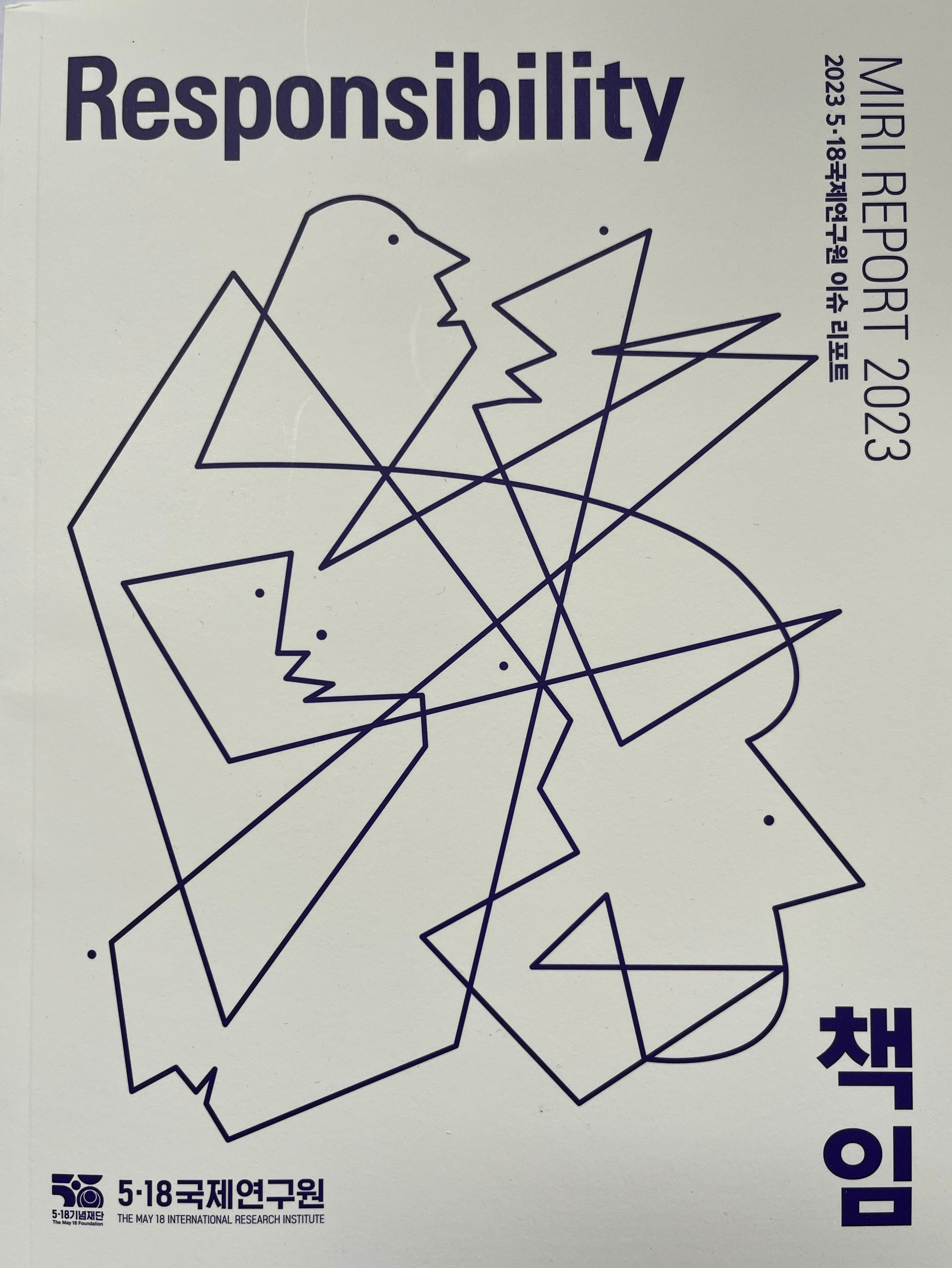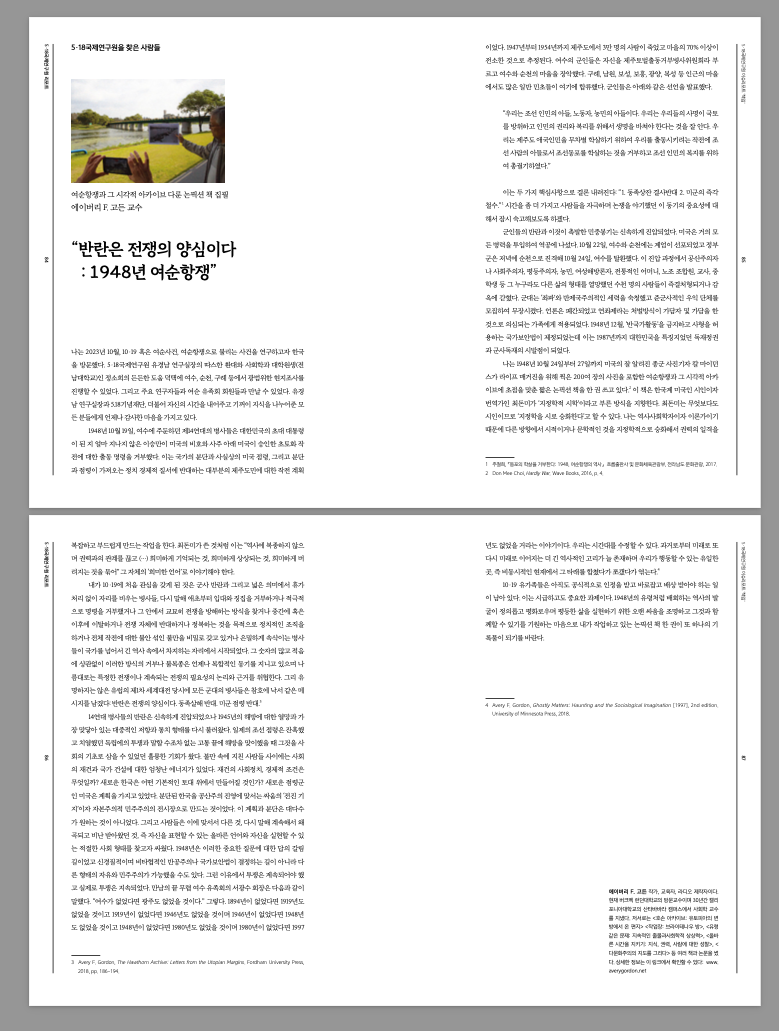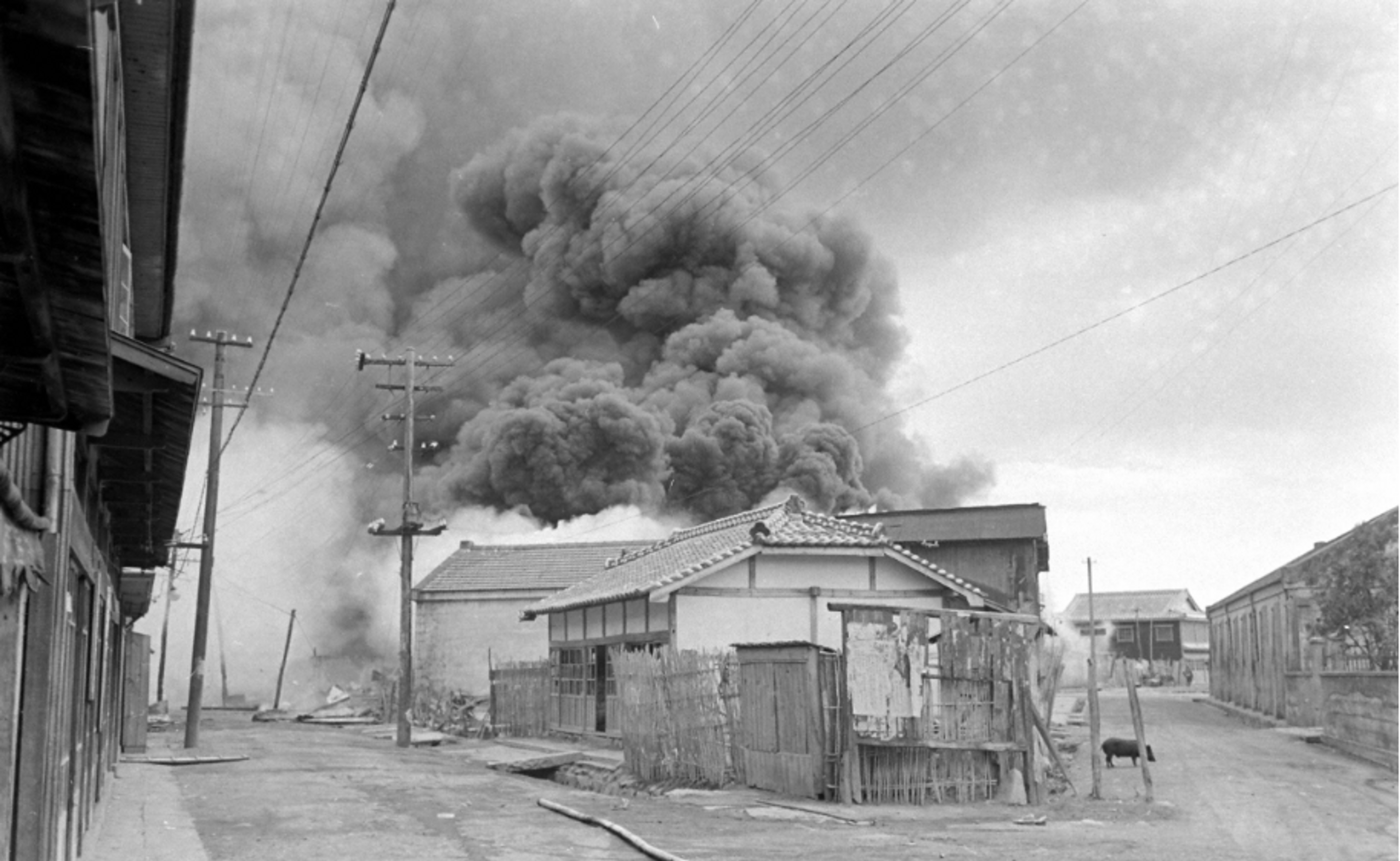Mutiny is the conscience of war: the 1948 Yeosun uprising
I am writing a small book of creative non-fiction centred around the Yeosun uprising* and its visual archive, which includes over two hundred photographs taken by the famous American war photojournalist Carl Mydans for Life magazine between 24 and 27 October 1948. In the form of the book, I am aiming for what, in Hardly War, the Korean-American poet and translator Don Mee Choi calls “geopolitical poetics.” Choi is foremost a poet so she “folds geopolitics into poetry.” I am foremost a historical sociologist/theorist so I work from the other direction to try to fold the poetic or the literary into the geopolitical, to complicate and soften, so to speak, the blows of power. As Choi writes, this involves “disobeying history, severing its ties to power… string[ing] together the faintly remembered, the faintly imagined, the faintly discarded” which then must speak in its own “faint language” (p. 4).
My initial interest in the Yeosun uprising was prompted by the soldier rebellion and its place in a longer transnational history of soldiers who are absent without leave in the broadest sense: who refuse to enlist or be conscripted in the first place; who actively refuse orders; who cleverly find ways to sabotage war from within; who leave in the midst or later; who organise politically against war itself or for causes their job is to subjugate; who keep secret or whisper furtively their unsettled dissatisfaction with the whole business. Regardless of whether their numbers are large or small, these forms of refusal and insubordination are always complexly motivated, but they also always, in their own measure, threaten the logic and rationales of a specific war or a permanent war’s necessity. Soldiers from every army during the very unpopular European First World War left in the trenches the graffiti message: mutiny is the conscience of war.
On October 19, 1948, a group of soldiers from the recently formed 14th Regiment stationed in Yeosu, located in the South Jeolla province in Korea, refused an order to deploy to Jeju-do where, not long after he was elected the first president of South Korea, Syngman Rhee, aided and abetted by the U.S., approved a scorched-earth counterinsurgency program against the people of Jeju-do most of whom opposed the division of the country, the de facto U.S. occupation of it, and the political-economic order that occupation and division imposed. Between 1947 and 1954, it is estimated that 30,000 people were killed on Jeju-do and over 70% of its villages burned. The soldiers in Yeosu declared themselves the Jeju Subjugation Dispatch Refusal Soldiers Committee 제주토벌출동거부병사위원회 and took over the towns of Yeosu and Suncheon, joined by large numbers of ordinary people also in the surrounding towns of Gurye, Namwon, Boseong, Boheung, Gwangyang and Gokseong. The soldiers issued a manifesto that read in part:
“We are the sons of the Korean people, workers and farmers. We know very well that our mission is to defend the homeland and sacrifice our lives for the rights and welfare of the people. As the sons of Koreans, we refused to massacre our Korean compatriots in an operation to indiscriminately massacre the patriotic people of Jeju-do, and we rose up for the welfare of the Korean people.” It ended with two key points: “1. Die-hard opposition to fratricide 2. Immediate withdrawal of US troops.”
The soldier revolt and the people’s uprising it prompted were contained quickly. The U.S. sent in nearly all the troops under its command and coordinated a counteroffensive. On 22 October, martial law was declared in Yeosu and Suncheon and government forces advanced to Suncheon re-capturing it by evening; by 27 October, they had recaptured Yeosu. In the suppression of the uprising, thousands of people -- communists, socialists, egalitarians, farmers, feminists, traditionalist mothers, unionists, teachers, middle school students … anyone who might have held even a mere desire for a different kind of lifeworld, and the soldiers were the least of them-- were summarily executed or imprisoned. The army was purged of its “leftist” and anti-imperialist elements while paramilitary right-wing groups were recruited and armed. Newspapers were closed down and a collective punishment of guilt by association (yeon-jwa-je 연좌제) was imposed on the family members of participants and suspected participants. In December 1948, the National Security law was enacted, which outlawed and permitted the death penalty for “anti-state activities,” setting the terms for the sequence of autocratic regimes and military dictatorships that characterised South Korea until 1987.
The rebellion of the soldiers of the 14th Regiment was contained quickly, but it re-activated a popular opposition and popular forms of governance tied most immediately to the aspirations of liberation occasioned in 1945. The Japanese empire’s occupation of Korea was brutal and when, after a fierce independence struggle and almost unspeakable suffering, it was over, a great opportunity arose to give that liberation a social basis and there was remarkable energy among a people aggrieved and exhausted and often hungry for reconstruction and nation building. What would be the socio-political-economic terms of that reconstruction? On what fundamental basis would the new nation of Korea be organised? The new occupying power, the United States, had a vision. A partitioned Korea would be the “forward base” in the struggle against communism and the showcase of capitalist democracy. This vision and its divisions were not desired by the majority and they fought against it and for something else, a something else consistently misrepresented and maligned; a something else searching for the right vocabulary to describe itself and the right social forms to realise itself.
1948 was a fork in the road in the answers to these utterly crucial questions; something else, a different mode of freedom and democracy, might have been possible than the path set by the hysterical and uncompromising anti-communism and the National Security Law. So, the struggles had to continue and they did. As Mr. Seo Jangsu, Chairman of the Yeosu Bereaved Family Association, said: “without Yeosu, there would have been no Gwangju.” Without 1894, no 1919; without 1919, no 1946; without 1946, no 1948; without 1948, no 1980; without 1980, no 1987; without 1987, no 1997 and so on. We could modify the dates to fit. There is always a longer historical arc from the past into the future and back again, converging breaking weaving the threads that we try to grasp from the only place we can, our non-synchronous present.
For the bereaved families of 10.19, much remains still to be publicly acknowledged, repaired and compensated. That is an urgent and necessary task. A book of creative nonfiction operates in a different register, one in which the excavation of the ghostly matters of 1948 can, I hope, shed light on and keep good company with the long varied struggle to realise a just, peaceful, and equitable life.
*The Yeosun uprising is sometimes known as 10.19 or the Yeosu Suncheon Incident or the Yeosu Suncheon uprising.
The May 18 International Research Institute (MIRI) Report 2023

“반란은전쟁의양심이다 : 1948년여순항쟁”

